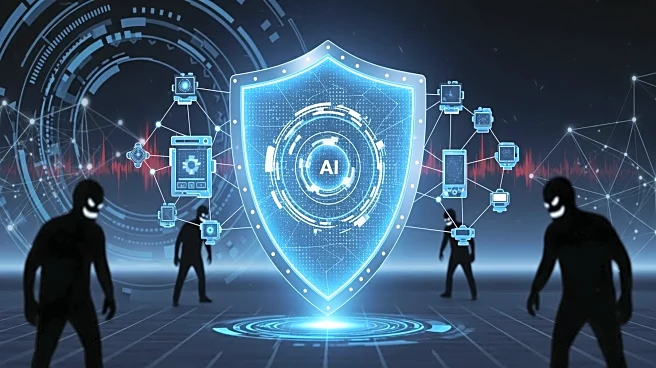What's Happening?
Neon Cyber has identified a new wave of ClickFix attacks that utilize self-infection videos to deceive users into executing malicious commands. These attacks mimic legitimate bot check services, such as those
from Cloudflare, and include embedded instruction videos and time counters to enhance authenticity. According to Push Security researchers, these attacks adapt to the victim's device, providing specific instructions for different operating systems, including macOS. The fraudulent pages often copy malicious code to the user's clipboard via JavaScript, setting the stage for infostealers and other malicious payloads. Mark St. John, co-founder and COO at Neon Cyber, emphasized the sophistication of these attacks, noting their rapid evolution and the use of AI-generated video and voice to increase trust. Aaron Beardslee from Securonix reported a 517% surge in ClickFix attacks in the first half of 2025, highlighting the commoditization of advanced social engineering tactics.
Why It's Important?
The evolution of ClickFix attacks signifies a growing threat to cybersecurity, as these sophisticated social engineering tactics lower the barrier to entry for less technical adversaries. The widespread adoption of these techniques by both profit-driven cybercriminals and state-sponsored groups poses significant risks to individuals and organizations. The ability of these attacks to bypass traditional security measures by exploiting user behavior underscores the need for enhanced cybersecurity awareness and training. As these tactics become more accessible, the potential for widespread exploitation increases, threatening the integrity of personal and corporate data.
What's Next?
The cybersecurity community is likely to intensify efforts to counteract ClickFix attacks, focusing on user education and awareness to mitigate the risks associated with these self-infection techniques. Security vendors may develop more advanced detection and prevention tools to identify and block malicious ClickFix landing pages. Organizations are expected to implement stricter security protocols and training programs to educate employees about the dangers of social engineering attacks. As threat actors continue to refine their tactics, ongoing vigilance and adaptation will be crucial in safeguarding against these evolving threats.
Beyond the Headlines
The ethical implications of ClickFix attacks are profound, as they exploit human psychology and trust to achieve malicious ends. The use of AI-generated content to enhance deception raises concerns about the role of technology in facilitating cybercrime. Additionally, the commoditization of sophisticated attack techniques challenges the traditional boundaries between amateur and professional cybercriminals, potentially leading to a more democratized and dangerous cyber threat landscape.











